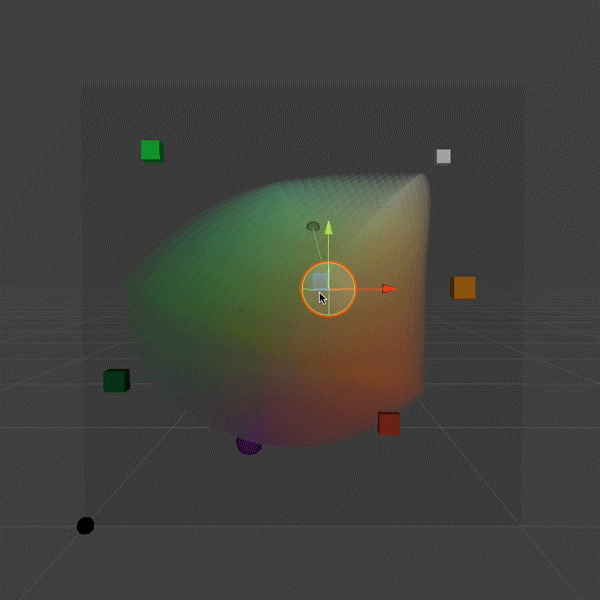Some refinements on the Chuck Close homage, and then a left turn into something very different. The bugs in my code are a source of unending joy and frustration. Someday, maybe, I’ll fix them, but where’s the fun in that?
Tag Archives: BigWetPixels
Big Wet Pixels 6
New today: exploring making each pixel smarter, with more thoughtful brushstroke planning. Starting to get excited about the shapes and textures that emerge. (In case it’s not obvious, I’m reaching for a Chuck Close vibe here. But his work has all kinds of depth to it, I’m barely scratching the surface as of yet.) Also, I’ve added some new types of randomized color palettes, including interference pigments on dark paper. So many happy accidents. I don’t think I’ll ever get bored of this.
Big Wet Pixels 5
Big Wet Pixels 5 from Cassidy Curtis on Vimeo.
Bigger, wetter, more pixelated! Playing with different strategies for sub-pixel brushstroke planning. There are so many possibilities…Big Wet Pixels 4
Big Wet Pixels 4 from Cassidy Curtis on Vimeo.
Continuing to explore grids of big wet pixels. This one could even be considered to fit today’s Genuary prompt, “8×8”, if you squint at it. I’m getting to the point with Unity and C# where it’s starting to feel less like work, and more like play. More to come soon.
Big Wet Pixels 3
Still exploring big wet pixels (originally inspired by the #genuary4 prompt) using my watercolor simulation in Unity. Now the pixels are actually pixels: given a random selection of pigments and paper, they try their best to match the color coming in through my webcam. Lovely glitches ensue.
To get this working, I had to go back and solve an old problem that’s bothered me for decades: given an arbitrary set of three pigments and paper, what combination of pigment densities will produce the closest match for any given RGB color? This is non-trivial, because the gamut described by three Kubelka-Munk pigments is non-linear, not necessarily convex, and might even not be an embedding! In our 1997 paper we addressed that problem in a really crude way, which I was never very happy with: quantize the pigment densities into bins, and find the nearest bin in RGB space using a 3d-tree search. So it gave me great satisfaction last weekend when I implemented a continuous solution, using gradient descent.

The curved RGB color gamut described by a trio of semi-opaque white, amber and green pigments on purple paper. The white sphere represents the RGB color we’d like to match. A smaller, colored sphere represents the closest approximation that can be produced within the color gamut. A thin, meandering line shows the path taken from the middle of the gamut via gradient descent.
Genuary 4: More Big Wet Pixels
Getting more aggressive with color and texture…
Genuary 4, 2024: Big Wet Pixels (and No Palettes)
It took me a minute to get going this year, mainly because my watercolor simulation code is a big pile of spaghetti that’s been artfully splattered across the walls and left to dry in place. I’ll have to do a bit of cleaning before I can have more serious fun with it. But I did at least manage to get my synthetic paper layer working, more or less. This video serves the prompts for both #genuary4 (Pixels) and #genuary2 (No Palettes). Happy #genuary to all who observe!
